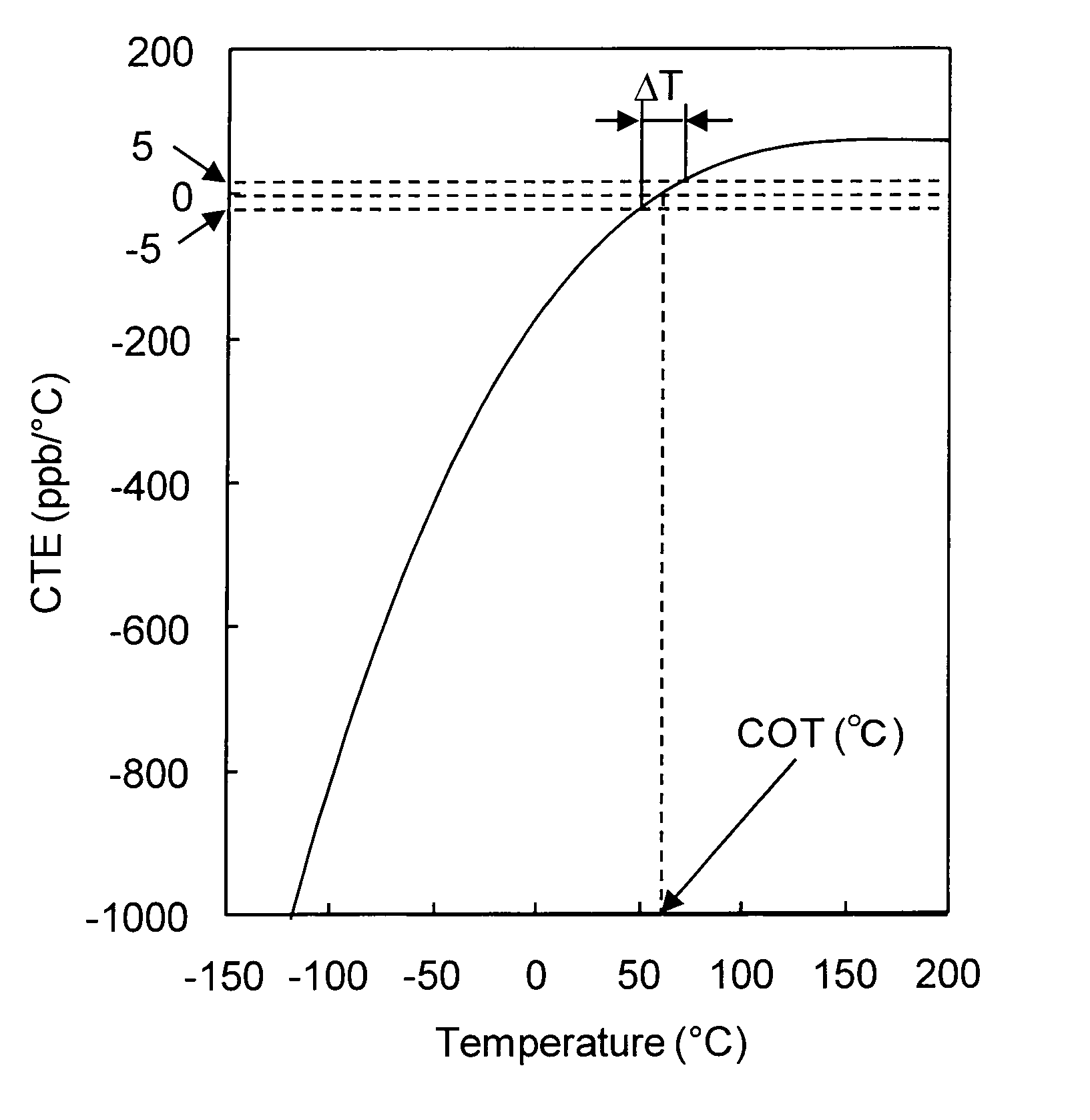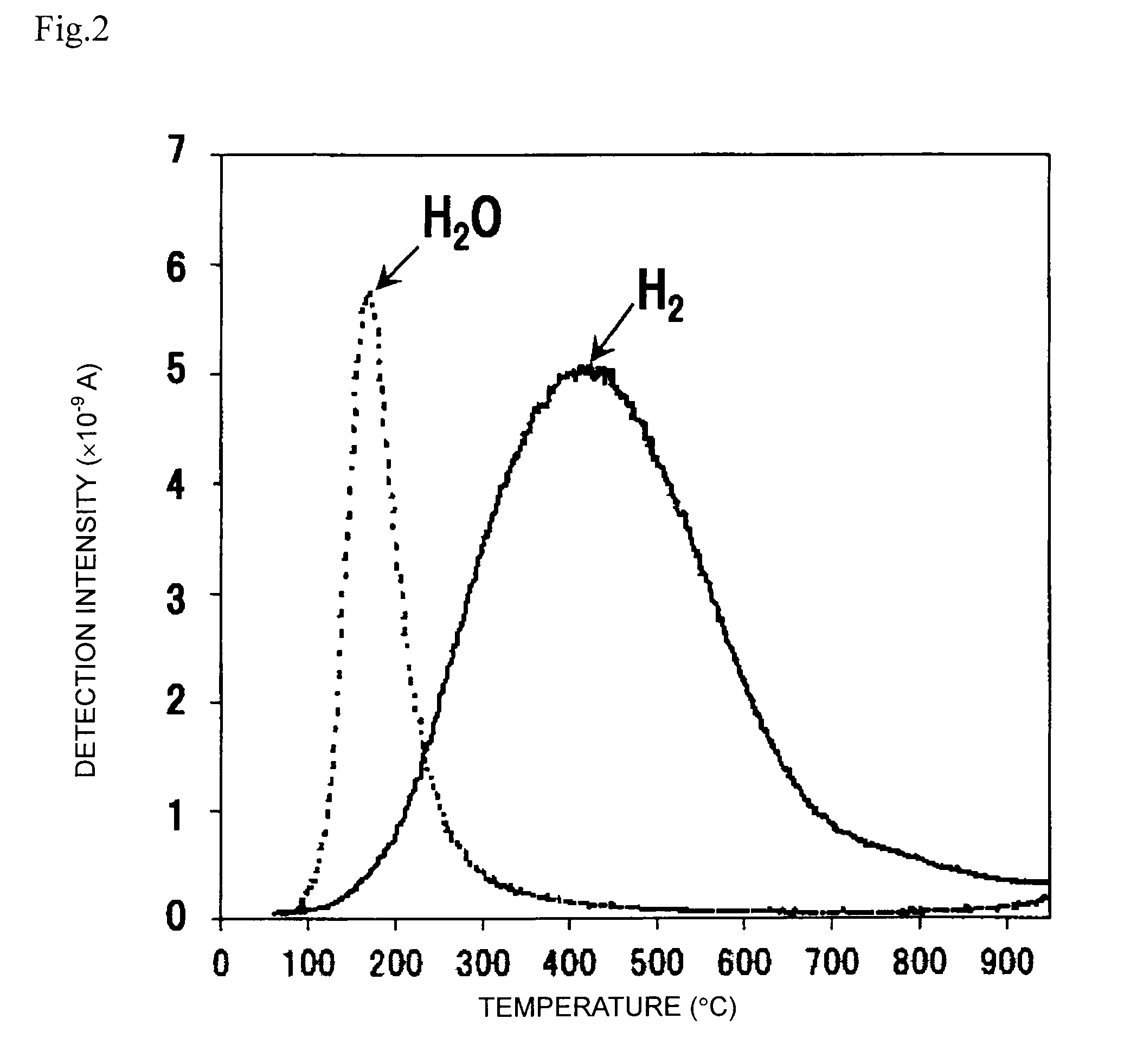TiO2-containing silica glass and optical member for EUV lithography using the same
a technology of euv lithography and optical components, which is applied in the direction of photomechanical equipment, instruments, manufacturing tools, etc., can solve the problems of complex optical design of optical components, difficult operation, and inability to solve simple and easy problems, and achieve the effect of maintaining the physical properties of multilayers for a long period of tim
- Summary
- Abstract
- Description
- Claims
- Application Information
AI Technical Summary
Benefits of technology
Problems solved by technology
Method used
Image
Examples
example 1
[0079]TiO2—SiO2 glass fine particles obtainable by gasifying TiCl4 and SiCl4 each serving as a glass-forming raw material of a TiO2—SiO2 glass, respectively and then mixing them and subjecting the mixture to heat hydrolysis (flame hydrolysis) in an oxyhydrogen flame is deposited and grown on a rotating substrate, thereby forming a porous TiO2—SiO2 glass body (step (a)).
[0080]Since it is hard to handle the obtained porous TiO2—SiO2 glass body without any treatment, the obtained porous TiO2—SiO2 glass body is kept in air at 1,200° C. for 6 hours together with substrate and then separated from the substrate.
[0081]Thereafter, the porous TiO2—SiO2 glass body is placed in an atmosphere-controllable electric furnace, and the pressure is reduced to 10 Torr at room temperature. Thereafter, the temperature is increased to 1,450° C. in a helium gas atmosphere, and the system is kept at this temperature for 4 hours, thereby obtaining a TiO2—SiO2 dense body (step (b)).
[0082]The obtained TiO2—SiO...
example 2
[0086]A TiO2—SiO2 glass body is obtained in the same manner as in Example 1, except that in Example 1, the amount supplied of TiCl4 is increased in the step (a); and that the hydrogen pressure is increased to 10 atmospheres in the step (f).
example 3
[0087]A TiO2—SiO2 glass fine particle obtainable by gasifying TiCl4 and SiCl4 each serving as a glass-forming raw material of a TiO2—SiO2 glass, respectively and then mixing them and subjecting the mixture to heat hydrolysis (flame hydrolysis) in an oxyhydrogen flame is deposited and grown on a rotating substrate, thereby forming a porous TiO2—SiO2 glass body (step (a)).
[0088]Since it is hard to handle the obtained porous TiO2—SiO2 glass body without any treatment, the obtained porous TiO2—SiO2 glass body is kept in air at 1,200° C. for 6 hours together with the substrate and then separated from the substrate.
[0089]Thereafter, the porous TiO2—SiO2 glass body is placed in an atmosphere-controllable electric furnace, and the pressure is reduced to 10 Torr at room temperature. Thereafter, water is charged in a glass-made bubbler; an He gas is bubbled under atmospheric pressure at 100° C.; and the mixture is kept in this atmosphere at 1,000° C. under normal pressure for 4 hours while in...
PUM
| Property | Measurement | Unit |
|---|---|---|
| fictive temperature | aaaaa | aaaaa |
| fictive temperature | aaaaa | aaaaa |
| fictive temperature | aaaaa | aaaaa |
Abstract
Description
Claims
Application Information
 Login to View More
Login to View More - R&D Engineer
- R&D Manager
- IP Professional
- Industry Leading Data Capabilities
- Powerful AI technology
- Patent DNA Extraction
Browse by: Latest US Patents, China's latest patents, Technical Efficacy Thesaurus, Application Domain, Technology Topic, Popular Technical Reports.
© 2024 PatSnap. All rights reserved.Legal|Privacy policy|Modern Slavery Act Transparency Statement|Sitemap|About US| Contact US: help@patsnap.com










